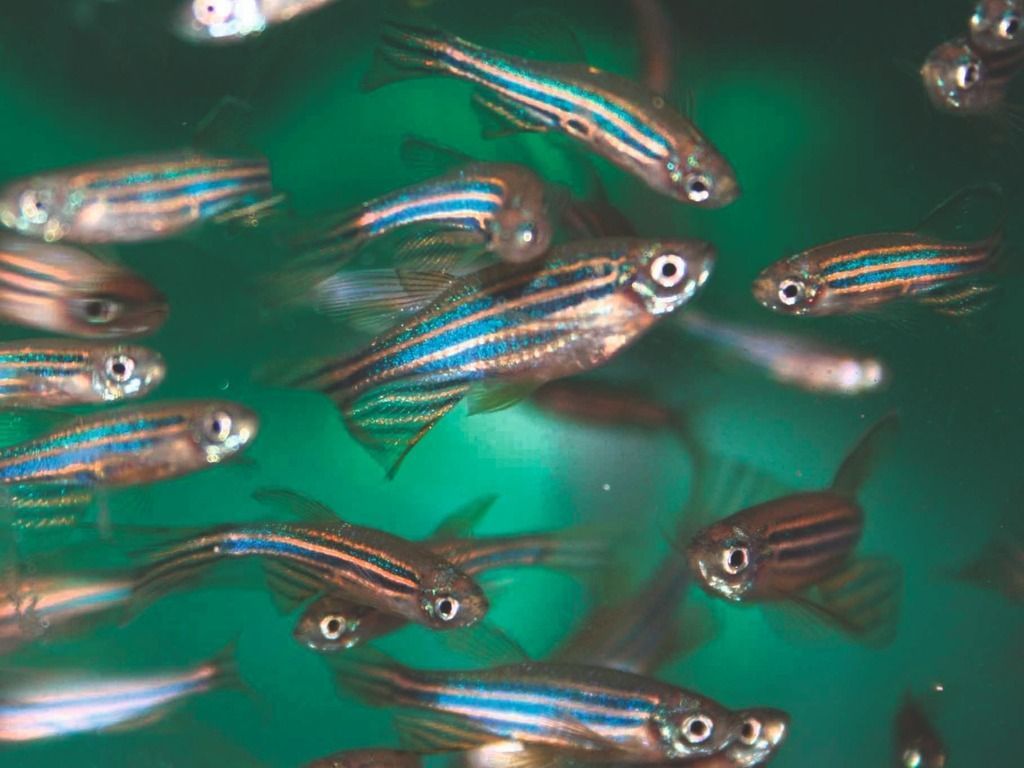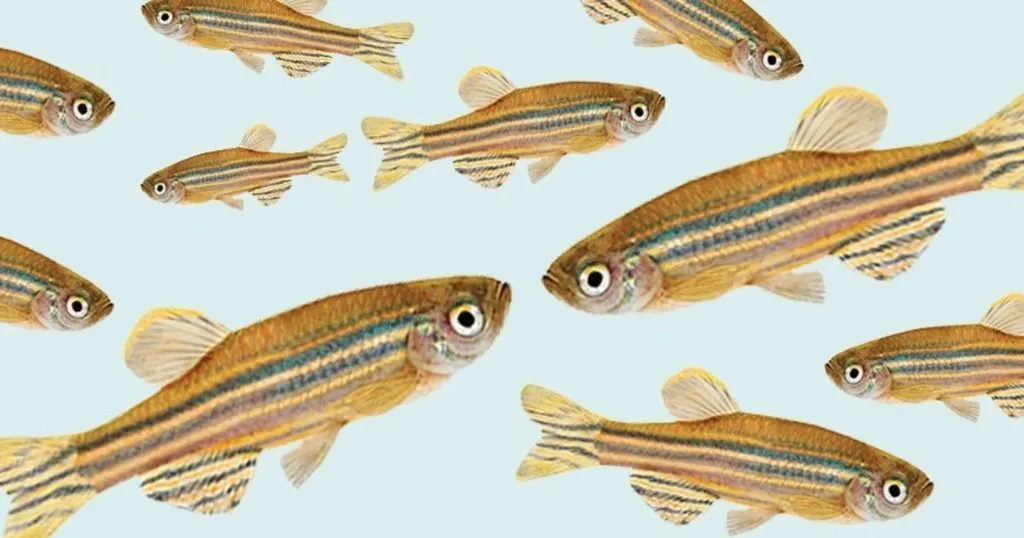Zebrafish Research made easy: a dive into the Gerlai Lab
Recently, we published a customer story on the Gerlai Zebrafish Lab in Toronto. In this blog we would like to tell you about the things we learned that could not fit into the video.
Posted by
Published on
Thu 02 Nov. 2023
Topics
| EthoVision XT | Learning And Memory | Methods And Techniques | Novel Object Test | The Observer XT | Zebrafish |

Last May we visited the Gerlai lab at the University of Toronto. We spoke to Robert Gerlai and some of his students about what they do and how they use EthoVision XT to learn about doing behavioral research. However, we couldn’t fit everything in our customer story on the lab. Therefore, I have written this blog to tell you more about what we learned at the renowned zebrafish (Danio rerio) lab.
Importance of zebrafish research
From brain research to modeling diseases, you can’t go without measuring behavior. For the past decades Robert Gerlai has been studying zebrafish behavior at his lab. This is quite unique, since there are not many labs focused solely on zebrafish behavior. The first reason he chose zebrafish for his lab was to advance science in that field. The second reason was mainly for educational purposes. Indeed, in his lab many students are doing hands-on projects with zebrafish. The methods are quite easy to learn, and this facilitates an environment where students can engage with science and even publish papers.

From the beginning the Gerlai lab used the Observer XT and EthoVision XT. These programs are ingrained in the scientific process. From pilot studies to sophisticated tracking-based studies, Noldus products help the students understand and interpret the behavior of zebrafish.
Stories from the students
Stephanie – learning, handling and housing of zebrafish
Stephanie is a M.Sc. student at the Gerlai lab. We talked with her about two studies she conducted at the lab using EthoVision XT. The first of these studies is about how housing density and tank sizes influence the levels of anxiety in zebrafish [1]. In order to test this, Stephanie housed the fish in three different tank sizes (1.5, 10 or 50 Liters), at three levels of density (1,2 or 4 fish/L), for two weeks. The behavior of the fish was observed in a novel tank test. Using EthoVision XT, Stephanie looked at a variety of swim parameters in relation to an artificial shoal. The distance to the artificial shoal and the types of swim patterns were an indicator for anxiety like behavior.

Anxiety like behaviors in this case were: staying close to the shoal, erratic movements and freezing behavior, among others. Indeed, this study showed that a small tank size and a high fish density had a perceived negative effect on the behavior of zebrafish. Even though the study was a proof of concept, they do advice that more research is done on this subject, to find the optimal way to house zebrafish.
The second study we discussed with Stephanie is about how handling affects learning behavior [2]. Handling is a very important component of animal research. This is why Stephanie and her colleagues tested the effect of different handling techniques on zebrafish behavior. She exposed the fish to four different types of handling (net chasing followed by air suspension, gentle net catch followed by air suspension, gentle net catch followed by being placed in a beaker, and transportation in the home tank with a direct pour into the test area).
They found that the type of handling affected the swim patterns and many other swim parameters of the fish. Indeed, both netting and chasing induced the most negative behavioral changes in the fish, and thus could possible affect test outcomes. It is important to consider the type of handling when designing behavioral studies.
Yashi – novel object recognition in zebrafish
Next, we spoke to Yashi. Who, together with a senior student, works on novel object recognition in zebrafish. At the Gerlai lab, undergraduate students are paired with PhD student to increase learning and teaching opportunities. Not only are students taught the ins and outs of science, they also learn how to correctly handle the zebrafish. For her project, Yashi studied novel object remembrance. This type of test hasn’t been done much in zebrafish.
She mostly looked at what types of objects zebrafish are sensitive to. It is currently unknown what types of objects the fish are sensitive to, and how they react. Therefore, this study was set up at the Gerlai lab. For this, mostly naturalistic objects (like rocks) in different colors were used, since it was more likely that the animals would react to these stimuli. If they are successful in showing how zebrafish react to these objects, the researchers can use that knowledge in further zebrafish cognition and memory studies.

Veronica – using ram cichlids as a learning model
Lastly, we would like to talk about an interesting innovation in fish learning studies. Veronica recently co-wrote a publication on the use of ram cichlids (Mikrogeiophagus ramirezi) as an animal behavior model. As the oldest vertebrates (evolutionarily speaking), fish are a great species to test the fundamental mechanisms of behavior.
Currently, the most used fish model is the zebrafish. However, Veronica and others tested whether or not ram cichlids could also be used. The usage of this species of fish has various advantages over the zebrafish. Zebrafish are naturally a very skittish animal and are easily stressed. The handling performed before behavioral tests, and the stress it causes, often has a major effect on the fish’s behavior. Ram cichlids are less anxious, when compared to zebrafish, which causes less disruption of learning (and other) behavior. Furthermore, this species of cichlid is solitary in the wild. Zebrafish are social animals and get anxious when housed alone, which is less apparent in ram cichlids. Lastly, ram cichlids’ natural habitat consists of closed spaces and crevices. This habitat more closely resembles the mazes and tanks that are usually used in learning tests, than the open water zebrafish prefer.
Aside from biological and environmental advantages, there are also technical advantages of using ram cichlids over zebrafish. They are much larger and move slower when compared to zebrafish. This makes it easier to accurately track the behaviors. Tsang et al. tested the learning capabilities in a plus maze and found that ram cichlids indeed can be used for learning and memory trials [3]. Moreover, EthoVision XT was able to track this type of fish, which increases the potential of using ram cichlids in observational studies.
3.1 billion years of shared history
To end of our visit to the Gerlai lab we ask ourselves the question: why should we use zebrafish? Robert gave a great quote regarding this query: “Life on earth is 3.5 billion years old. Humans last common ancestor with fish existed 0.4 billion years ago. This means that fish and humans have more than 3.1 billion years of common evolutionary history. That’s the answer, that is why zebrafish is translational relevant”. And while there are structural differences between zebrafish and humans, there is always a guarantee that there is a connection between the two.
Zebrafish are cheaper to breed and house, simpler in structure, and smaller than rodents. This makes it easier and more cost effective to perform many tests, while reducing the number of animals needed. And even though zebrafish will not replace the use of rodents in behavioral studies, comparing both to each other can tell us a lot about the structural responses to certain stimuli.
References
1. Shishis, S.; Tsang, B.; Gerlai, R. The Effect of Fish Density and Tank Size on the Behavior of Adult Zebrafish: A Systematic Analysis. Front. Behav. Neurosci. 2022, 16.
2. Shishis, S.; Tsang, B.; Ren, G.J.; Gerlai, R. Effects of Different Handling Methods on the Behavior of Adult Zebrafish. Physiol. Behav. 2023, 262, 114106, doi:10.1016/j.physbeh.2023.114106.
3. Tsang, B.; Venditti, V.; Javier, C.M.; Gerlai, R. The Ram Cichlid (Mikrogeophagus Ramirezi) Learns an Associative Task: A New Fish Species for Memory Research. Sci. Rep. 2023, 13, 13781.
Related Posts

How to measure complex exploratory behavior in larval zebrafish

Getting robust results: one zebrafish is not like the other

